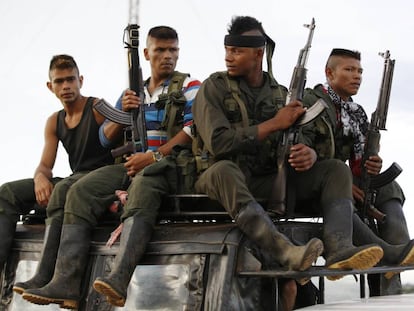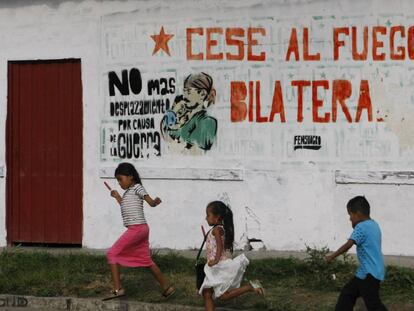Colombia’s FARC conference turns into Woodstock-style celebration
Celebratory mood pervades guerrilla army’s conference to debate peace accords

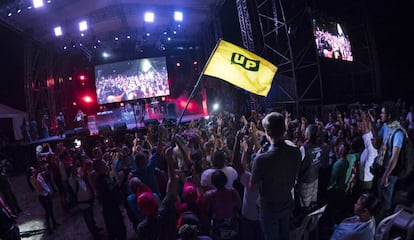
Many visitors to the six-day 10th annual conference held by the leftist guerrillas of the Revolutionary Armed Forces of Colombia (FARC) – which is currently underway in Caquetá department, deep in the grasslands of Yarí, in the southwest of the country – have been struck by some unlikely comparisons with the Woodstock festival in the US.
It has to be said the complex of tents and stages set up here looks more like the legendary 1969 event than an forum to debate the FARC’s peace deal with the Colombian government on August 25, ending half-a-century of conflict that left more than 200,000 dead and displaced millions of people.
This has all been financed with the money that we have saved since the ceasefire began
Jorge Briceño, responsible for the conference’s logistics
The debates to discuss the peace deal are being held behind closed doors between some 200 senior members of the FARC. At the end of each day, a spokesman holds a press conference where there are few questions.
“We are addressing 30 issues, mainly to do with the agreements,” says Iván Márquez, the FARC’s chief negotiator during the four years of talks in Havana. “Our comrades are putting forward some very attractive names for the political movement that will emerge from the conference.”
The FARC’s secretariat will also receive reports from its troops about their concerns regarding the future. The main worry is about how they will be reincorporated into society and whether their safety can be guaranteed.
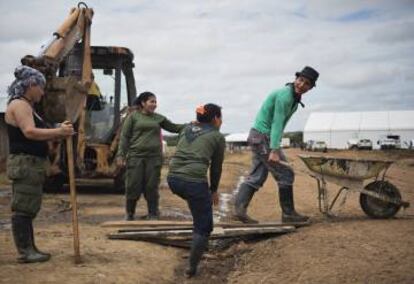
The conference site, includes a “guerrilla experience” area, where two camps have been set up by FARC units from different areas of Colombia, allowing the hundreds of journalists attending the event to use ditch latrines, shower using rain water after rising at 5am with their guerrilla hosts, and enjoy a single daily meal with them.
As the disarmament process agreed in the peace deal has yet to take place, the guerrillas remain in uniform, their rifles hanging at the entrance to their tents. But the senior leadership has shed its fatigues and can easily be distinguished from the troops by their casual clothes.
Residents from nearby villages have set up food stalls, along with souvenirs, and are even selling cannabis. Bulldozers and trucks are at work from sunup to sundown building a road outside the entrance to the site. Asked who is paying for this, and why the guerrillas are taking part in the work, local people say that a kind of toll is imposed on people using the road.
This area has been controlled by the FARC for the last 50 years, and local farmers and ranchers here have been protected from the violence that has hit other communities, such as Florencia, the regional capital of Caquetá, which as recently as a decade ago had one of the highest death rates in the country as a result of the war.
The complex of tents and stages set up here looks more like the legendary 1969 rock festival Woodstock
On Saturday night, Colombian reggae group Alerta Kamarada closed the first full day of the conference. Some 300 FARC delegates have traveled here to ratify the accords with the government. Most of them, accompanied by troops, ended the night dancing and punching the air with clenched fists. Finally, the rest of their number surrendered to the music, with one eventually making his way to the stage where he rapped about the need for peace, justice, political prisoners and his fellow guerrillas.
In the audience was Tanja, a Dutch volunteer who is part of the leadership, and who was smiling along with fellow delegates after more than eight hours discussing the ins and outs of the peace deal.
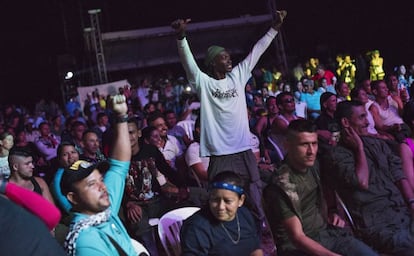
“If necessary, we’ll talk all night until we reach agreement,” says Ramiro, who commands a unit in Putumayo, close to the border with Ecuador.
At the center of the site is a vast stage with three huge screens and a powerful sound system, where at the end of each day, music and other events are held. Around the stage area are stalls selling beer and rum.
“This has all been financed with the money that we have saved over the last year, when the ceasefire began: it’s money we haven’t had to spend on fighting,” says Jorge Briceño, alias Byron, who is responsible for the conference’s logistics. More than 300 guerrillas have worked flat out over the last 26 days, following months of planning. The rest of the budget, he says, has come from “people who have donated money toward peace.”
English version by Nick Lyne.
More information
